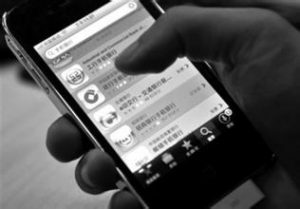New York City-A cafe customer who is tired of talking on a cell phone sits in a happy bubble, and nearby customers are confused about the dead cell phone. A person tried to take a secret snapshot with his camera phone, but only got a blank screen, probably the cafe used the most advanced jammer.
A pastor gave his church a new kind of energy-electromagnetic energy-to keep his sermons calm and without beeps, chi sounds, or bells. These are a glimpse of the battle of equipment that is quietly playing around the world.
While millions of people welcome the freedom of mobile communications, some people and companies are advancing with the times. They fight technology against technology and use detectors, jammers and other things to protect privacy, security and sometimes mental health.

In the United States, cell phone jammers are prohibited, but foreign companies even sell pocket cell phone jammer online on eBay, and the military and government are already using this device. The wireless fight has begun. Maybe you have jammers around you. Appears only that you haven’t met.
Jeff Kagan, an independent telecommunications analyst based in Atlanta, said: “It’s like a battle between radar detectors and radar cannons. It’s been escalating.” He said that the demand for such equipment is due to “Double-edged sword” triggered.
He said: “The inventor of the mobile phone never thought that people would use it and affect the privacy of others.” “The inventor of the camera phone never thought of using it in the dressing room and other inappropriate places.”
Interfering with mobile phones (essentially radios) is relatively easy. Jammers usually block signals by flooding the entire area with interference or by transmitting on the same frequency as the phone, thereby interfering with the communication between the phone and the cell tower.
Some jammers may need to be as smart as mobile phones in an attempt to improve performance or jump to other radio channels to avoid interference. Depending on the intensity of the interference, the jammer may interfere with communications within a few meters or kilometers. Commercial jammers have been sold overseas for many years, and even some Internet posts even contain instructions for building homemade models.
The Federal Communications Commission prohibits people in the United States from manufacturing, selling, operating, or importing radio interference equipment. Those who violate the 70-year-old communications law will face up to one year in prison and a fine of $ 11,000 per violation.
FCC officials said they have received few complaints about cell phone jams and have never taken action against anyone because of this injury. Jammer industry experts claim that people using low-power equipment are not afraid of retaliation because it is difficult (if not impossible) for callers to distinguish between jamming signals and normal cell phone dead zones.
Analyst Kagan said that even so, US law restricts the use of jammers and limits the distribution of jammers among consumers. The wireless industry says that jamming equipment can harm the public.
Travis Larson, a spokesperson for the Cellular Telecommunications and Internet Association, said: “150 million Americans rely on mobile phones. If these phones are blocked, doctors may miss calls made by the hospital and parents may miss the babysitter Emergency call.”
Larson said that in order to reduce the hassle of using mobile phones, customers should use their “mute button, volume control, vibration mode, voice mail and on / off button” when appropriate.
He said that despite warning signs, destruction of movie theaters and other specific areas that are expected to remain silent is still a danger. He said: “Interferers may penetrate other adjacent frequency bands and block public safety radio signals used by police and firefighters.” But for safety reasons, polite advice and laws have not prevented people from buying jammers.
British company Global Gadget UK sells a series of troubleshooting products to customers in other countries, including portable jammers disguised as mobile phones, which may interfere with cellular communications up to 30 meters from users. The product ’s Internet advertising says: “They will silence antisocial people who insist on using their phones in the most indiscriminate way.” “The good thing is that they do n’t know that you turned them off! You will only see them The signal has dropped. “Michael Menage, the company’s director, said he sold hundreds of pocket jammers to people in the largest market in the United States. Each cost is about $ 320.
Menach said: “It is illegal to use them here. People are still keen to buy them.” He said he had sold them to the US military, but most of the customers were private or small businesses and they were fed up with distracting them from mobile communications Attention. He said some businessmen also use jammers to keep meetings quiet or disable potential eavesdropping devices, especially phones that are classified as vulnerabilities. Jammers are also illegal in England, but are used more frequently in other parts of the world (including some parts of the Middle East, Africa, Asia, and Europe). They blocked calls to religious buildings such as theaters, restaurants, libraries, prisons and mosques and churches.